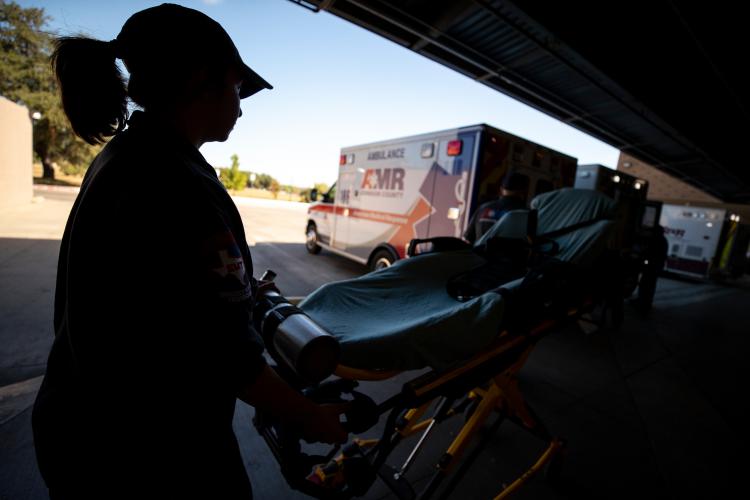
JPS Health Network trauma surgeons work in rooms full of high-tech lifesaving equipment. Yet one of their most valuable tools might be the simple slips of paper they’ve recently begun to keep handy when they’re on duty.
“We have little cards we’ve made that we can give to Emergency Medical Services providers after they hand off patients to us and they’re leaving to go on to their next call,” said Dr. G. Robert Stephenson, Interim VP, Chief Quality Officer, Vice Chief of Surgery. “It seems like such a small thing. But these folks work to save a patient’s life and then they have to move on and go to do it all over again. They really had no way to find out what happened to a patient after they walked out the door.”
The contact cards, which ask EMS personnel for a phone number and the best time to reach them, were the idea of Dell Moore, Interim Chief of Surgery.
“The idea behind it is to build good relationships with our pre-hospital providers and to show them that we appreciate the work they do,” Moore said. “They like the feedback. They want to know the decisions they made were in concert with what we found.”
The program has been a big hit, so far, with the emergency medical services personnel who rush to the scene of traumatic motor vehicle crashes, construction site accidents and other life-threatening situations, bringing patients to the Level 1 Trauma Center at JPS on a daily basis. It’s not just because EMS caregivers are curious about the outcome of their cases. It’s also because knowing what worked and what didn’t is an important tool in saving lives.
Matt Zavadsky, chief strategic integration officer for MedStar Mobile Healthcare in Fort Worth, said the slips – which are given to emergency medical services workers who bring Level 1 and Level 2 trauma patients to JPS -- are a simple idea. But they’re also an incredibly powerful tool that can EMS work with surgeons for the benefit of patients.
“What JPS is doing with the contact information is very unique,” Zavadsky said. “It’s the only hospital that does that for us. It’s so valuable. Once we drop the patient off at the hospital, we rarely get any feedback. Not only do our people want to know if critically injured patients are going to be okay, they want to know if the care they gave in the field was consistent with what the diagnosis was when the patient reached the hospital.”
Our EMS colleagues are an integral part of our trauma system in the area.
After the fact, surgeons and emergency medical services workers can connect to compare notes about what worked well and what could have been done differently. The EMS providers can also have the satisfaction of hearing about what they did right to save lives, Zavadsky said. That’s an important boost to their personal wellness and mental health when they’re dealing with high-stress situations all day long.
“Was the treatment protocol our people gave in the field consistent with diagnosis?” Zavadsky wondered. “If it wasn’t, we can ask questions, and that helps with the continuum of care. Being able to get that information for trauma or sepsis cases is something that could be very, very helpful.”
Dr. Raj Gandhi, Trauma Medical Director at JPS, said it’s vital for all caregivers to work together to make sure nothing that can be done to improve the chances of saving a trauma patient is overlooked.
"Our pre-hospital colleagues are an integral part of our trauma system in the area,” Gandhi said. “We want to get them real time feedback so that they may improve and help us to understand some of the injuries we may see from the mechanism they have witnessed in the field.”
Martha Headrick, Program Director with AirEvac LifeTeam, said her team members love the new service. She said she isn’t surprised JPS was the first hospital in the area to offer it because the health network previously has been an innovator when it comes to building relationships with its partners. She said JPS was the first area hospital years ago to hire a liaison who is available to provide follow up information to emergency services personnel.
“JPS has always been out front in working with EMS to provide the best care to patients,” Headrick said.
Headrick said it is tough for her team members to follow up on patients because crews generally handle four or five runs in a typical shift. There is little – if any – downtime because, between rescue flights, crews have to refuel and restock their helicopter.
“It’s always been an issue for EMS to get follow up on patients,” Headrick said. “We are part of their care. So, it’s really nice to know, especially if the patient was given blood or advanced procedures were involved in the case. As usual, JPS is ahead of everyone else.”
